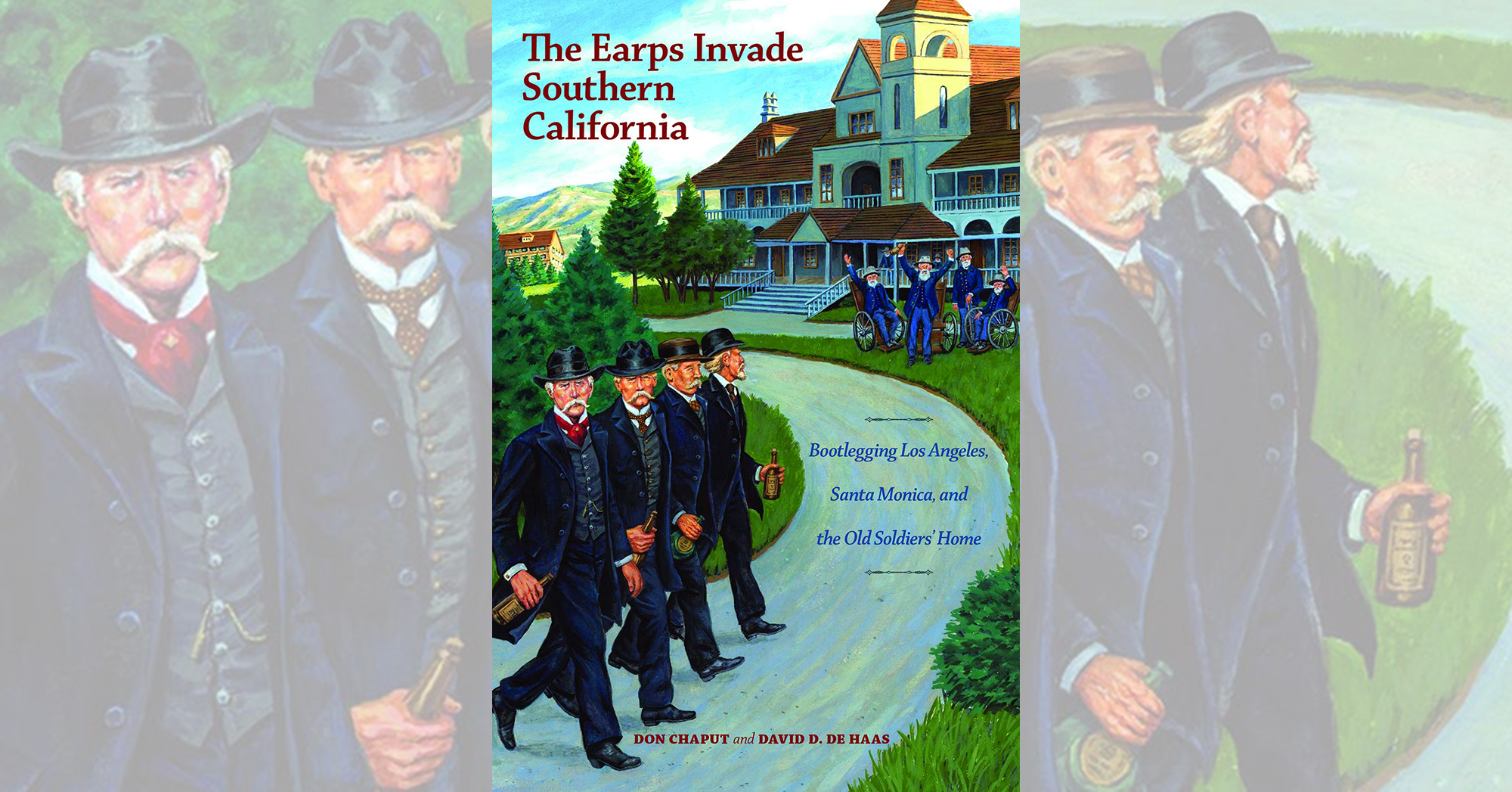The Earps Invade Southern California: Bootlegging Los Angeles, Santa Monica and the Old Soldiers’ Home, by Don Chaput and David D. de Haas, University of North Texas Press, Denton, 2020, $24.95
While the 1950s TV Western The Life and Legend of Wyatt Earp portrayed the famed lawman as a lone crusader for justice, a more accurate portrayal of his life would have been something more akin to the small-screen family saga Bonanza. For during the actual Old West days, Wyatt Earp, his father and brothers often moved as one to seize opportunity (see Don Chaput’s “Clusters of Earps,” in the October 2020 Wild West), personifying the unspoken Cartwright philosophy, “The family that holds together fills their billfolds together.”
Taking a welcome break from the gunplay of the 1880s, Don Chaput, curator emeritus of the Natural History Museum of Los Angeles County, and Earp aficionado David D. de Haas recount the clan’s last get-together in The Earps Invade Southern California. The book opens in the early 1900s on the Soldiers’ Home in Sawtelle, between Los Angeles and Santa Monica, whose residents include Wyatt’s father Nick and half-brother Newton. In spite of all efforts to direct their interests elsewhere, the old soldiers seem most inclined to spend their pension money on alcohol, a pastime the local “blind pigs” (better known in the 1920s as “speakeasies”) are more than happy to accommodate. Among the more prominent operators along North Fourth Street is James, eldest of the Earp brothers and in all histories overshadowed by at least three of his brothers. By 1905 Virgil and Wyatt had arrived to investigate this latest potential “bonanza.” The narrative centers on the physical and moral health of the veterans at the hands of authorities seeking to limit, control or eradicate their often bootleg potations. In the process we follow the cities’ busy efforts to develop their assets and establish their identities.
Chaput and de Haas are hard-pressed to keep their famed protagonists front and center, given the numerous other colorful characters, many of whom had previously crossed paths with the Earps. Indeed, the authors themselves conclude the Earps were not so much drivers of Western development as opportunists, the Soldiers’ Home scheme ranking among their least successful. Still and all, The Earps Invade Southern California fills a gap in the Earp saga and will fascinate anyone interested in the transitional time when Los Angeles and neighboring cities were striving to define themselves.
—Jon Guttman
This post contains affiliate links. If you buy something through our site, we might earn a commission.





